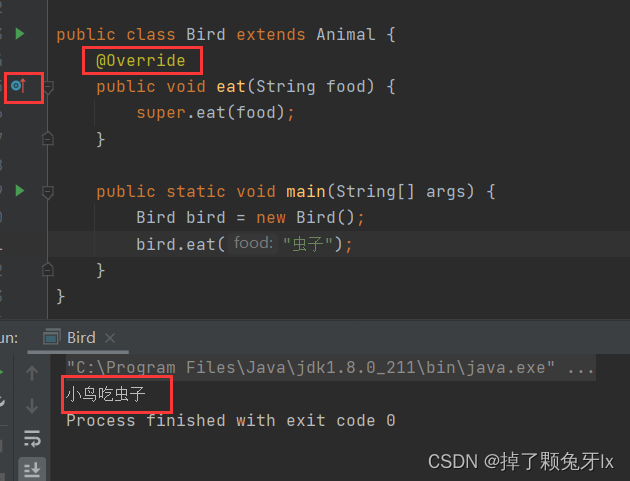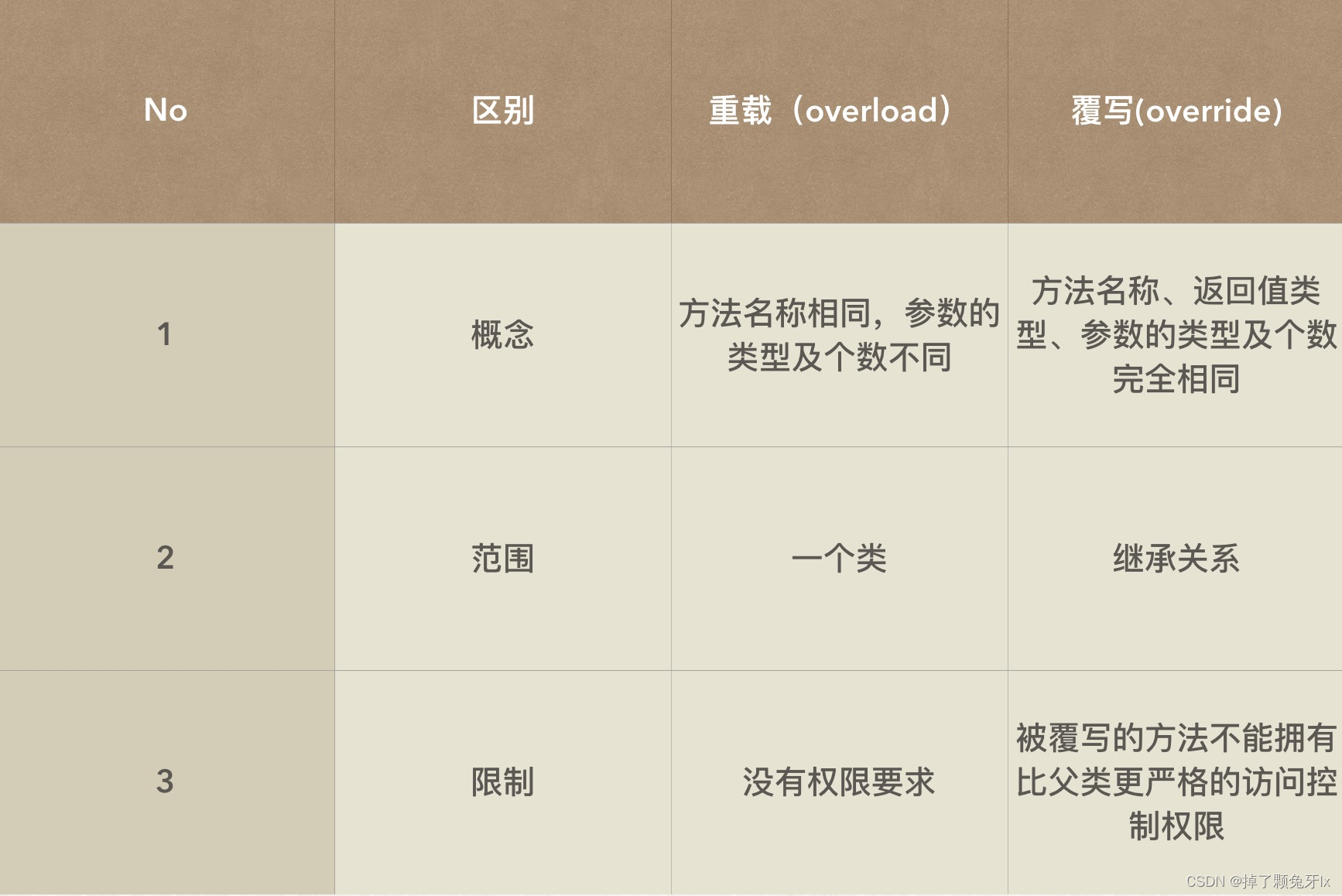目录
1. 什么是重载
重载(overload),它是指我们可以定义一些名称相同的方法,通过定义不同的输入参数来区分这些方法,然后再调用时,VM就会根据不同的参数样式,来选择合适的方法执行。
重载最常见于java的编写过程中,是面向对象程序设计(Object Oriented Programming)的特性之一。
重载的规则:
- 方法名相同;
- 方法的参数不同(包括参数个数或者参数类型);
- 方法的返回值类型不影响重载。
代码示例:
public static void main(String[] args) {
int a = 10;
int b = 20;
int ret = add(a, b);
System.out.println("ret = " + ret);
double a2 = 10.5;
double b2 = 20.5;
double ret2 = add(a2, b2);
System.out.println("ret2 = " + ret2);
double a3 = 10.5;
double b3 = 10.5;
double c3 = 20.5;
double ret3 = add(a3, b3, c3);
System.out.println("ret3 = " + ret3);
}
public static int add(int x, int y) {
return x + y;
}
public static double add(double x, double y) {
return x + y;
}
public static double add(double x, double y, double z) {
return x + y + z;
}
2. 什么是重写
在 Java 中子类可继承父类中的方法,而不需要重新编写相同的方法。但有时子类并不想原封不动地继承父类的方法,而是想作一定的修改,这就需要采用方法的重写。方法重写又称方法覆写,方法覆盖。
重写的规则:
- 重写的方法方法名、参数列表必须一致,方法返回值也要一致(除了向上转型);
- 重写方法时子类的方法的访问权限不能低于父类的方法访问权限;
- 普通方法可以重写,但是 static 修饰的静态方法不能重写;
- final 修饰的方法不能被重写。
访问权限由大到小:public > protected > default > private
代码示例:
public class Animal {
public void eat(String food) {
System.out.printf("动物会吃");
}
}
public class Bird extends Animal {
@Override
public void eat(String food) {
super.eat(food);
}
public static void main(String[] args) {
Bird bird = new Bird();
bird.eat("虫子");
}
}ps:推荐在代码中进行重写方法时显式加上 @Override 注解 。
运行结果:

3. 二者的区别
- 重载是一个类中的方法进行重载;而重写和继承有关,是子类重写父类中的方法。
- 重载只要求方法名称相同,参数类型及个数不同;重写要求方法名称,参数类型及个数,返回值类型都要相同。
- 重载对于方法的访问权限没有要求,而重写则要求子类重写的方法不能低于父类被重写方法的访问权限。
